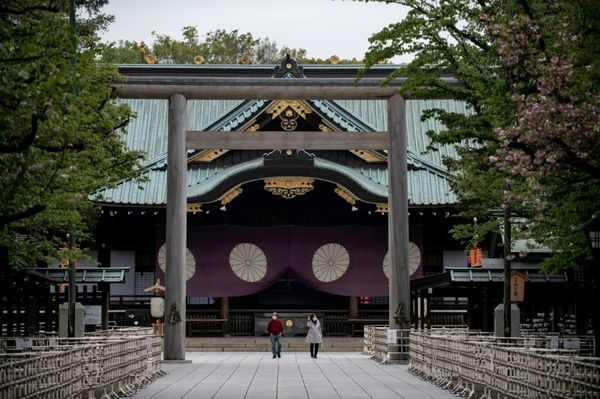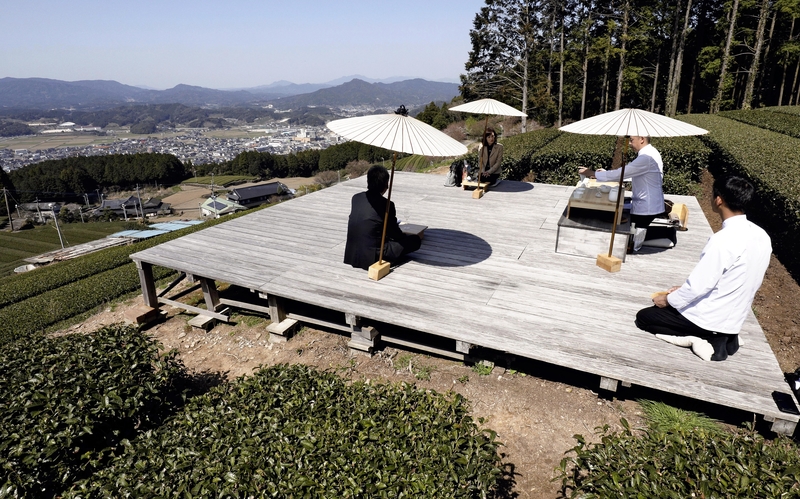
URESHINO, Saga -- Just a 10-minute drive from Ureshino's hot spring district, vibrant green tea fields cover a hillside at an elevation of about 200 meters. In a corner of the field stands an open-air teahouse without walls or roof. This unique space, which has a magnificent view over the fields and city below, is the centerpiece of the so-called Ureshino tea tourism campaign developed by this city in Saga Prefecture.
"The nutrient-rich claylike soil produces tea that has a rich sweetness and a wonderful aroma," said Hitoshi Soejima, 43, a fourth-generation tea grower on this about three-hectare plantation. "I grew and processed this tea myself."
Soejima, wearing a white jacket, pours my cup of tea without a hint of flamboyance. Tea is extracted from the leaves in water at just the right temperature and for just the right length of time. The teapot and teacup were crafted by Satoshi Tsuji, 40, a local maker of Hizen Yoshida ware.
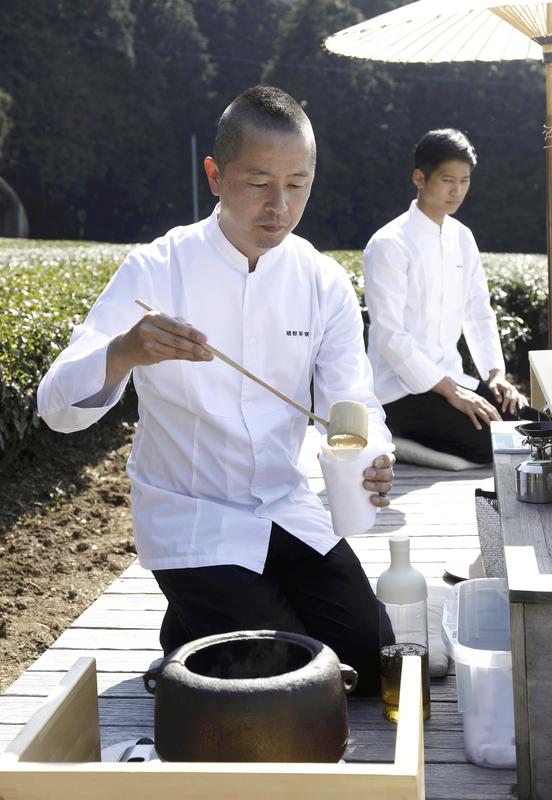
Three plantations in Ureshino have open-air teahouses, and the growers themselves serve tea to customers. In addition to green tea, the menu includes tea made with an adjusted production and fermentation process, and green tea processed by parching in a pot. Delightfully fragrant oolong tea was chilled and then poured into a glass to reveal its golden color. This outdoor tea experience, which includes three cups of tea and sweets, costs 10,000 yen (excluding tax). As well as savoring the superb tea, the delicious taste of which comes from attention to details such as how far the leaves have opened, visitors can soak up the panoramic view.
"Your image of tea will change," Soejima said proudly.
Tea grown in Ureshino has received many accolades from a national tea quality assessment association. Tea cultivation in the area is said to date back to the Muromachi period (1336-1573), but in recent times a shortage of successors has culminated in more plantations being abandoned.
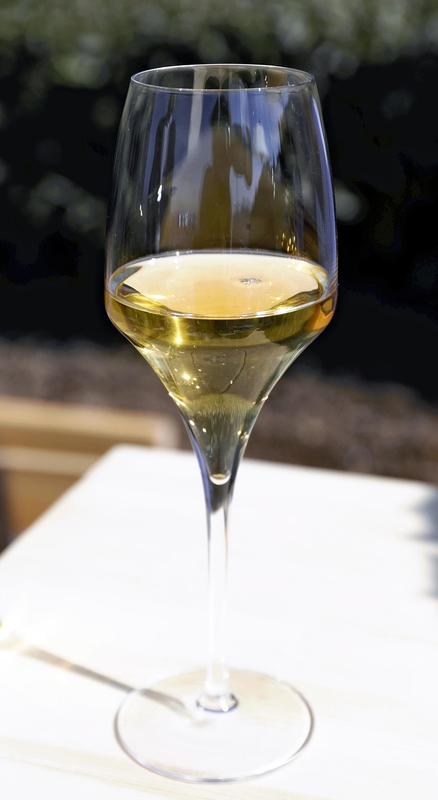
Ureshino is a renowned hot spring district, but the bursting of the economic bubble and other factors have caused the number of hotels and ryokan inns here to plunge from 83 in around 1975 to 32 today. Hizen Yoshida ware has been crafted in the region for more than 400 years, but fewer than 20 kilns are still in operation, so it is a relatively small production area and often stands in the shadow of Arita ware, which is made nearby.
"Tea, hot springs and ceramics -- Ureshino has three traditional industries to be proud of, but their full potential is not being tapped," said Yoshimoto Kohara, 43, a ryokan operator. "If each could be developed and then combined with the others, they would make the city even more appealing."
This view was echoed by fellow ryokan operator Kenta Kitagawa, 35. Kohara and Kitagawa both worked outside Saga Prefecture for a time but returned about 10 years ago to carry on family businesses that had fallen on hard times. They both felt the same sense of urgency.
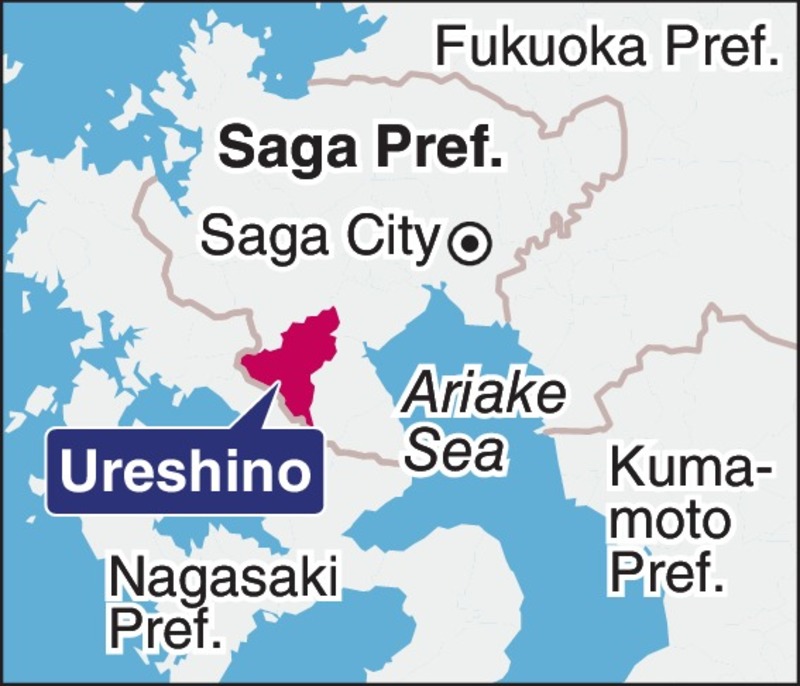
In 2016, Soejima and a group including young tea growers and potters launched a campaign to help the city. Events held at ryokan included dinner parties and cafes where tea producers poured tea right in front of the guests, which resulted in a request to hold a similar demonstration at a Tokyo hotel. The campaign organizers also wanted to develop an experience unique to Ureshino. In 2017, an open-air teahouse was built and word quickly spread through social media and other channels about this spectacular space.
"A growing number of our guests say they want to drink tea," said Kohara. "This has huge potential."
In the summer of 2019, a demonstration was held for officials from local authorities and relevant industry groups, who were asked to lend their weight to the campaign.
The city government, convinced that tea plantations could become tourist spots in their own right, compiled a tourism pamphlet. This year, it started promoting attractions such as trekking and cycling around tea fields, and walking through a pottery production district while drinking takeout tea.
The coronavirus pandemic will certainly have a lingering impact here, but Kitagawa remains optimistic for the future. "People these days want to go on trips where there are no crowds and they can feel the wide-open spaces. I hope they visit Ureshino for the ultimate cup of tea," Kitagawa said.
Since 2000, there has been a greater emphasis on so-called new tourism, which offers local interactions, accommodation and experiences that capitalize on regional resources.
The Japan Tourism Agency is encouraging cooperation between regions that share a common theme -- such as sake breweries, areas considered "sacred" by anime fans or sites noted in connection with ninja -- to work together to create a multiplier effect through sharing successful cases and organizing excursion tours.
"Domestic trips by Japanese will be crucial for the tourist industry because the number of inbound visitors has dropped since the coronavirus epidemic emerged," said Atomi University Associate Prof. Yasushi Shinohara, an expert on regional tourism promotion and an advocate of the Cabinet Office's regional vitalization strategy. "Many travelers want to visit places that pique their interest, so the nation needs to create an environment in which they can be welcomed across an entire region. That will lead to regions developing their own brand and generating economic activity."
Read more from The Japan News at https://japannews.yomiuri.co.jp/

